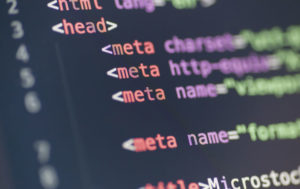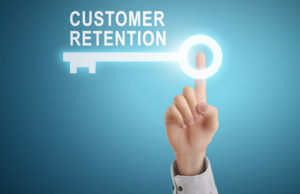
This story was originally published on Dec. 7, 2010, and is brought to you today as part of our Best of ECT News series.
Companies spend a lot of money to drive traffic to their websites. Reactive live chat implementations, while highly beneficial, are similar to search engine optimization — “the more impressions, the better.” However, placing a live chat button on your website will not generate more traffic to your website, nor does it guarantee that your most qualified visitors will chat.
While this seems a pedantic observation, it is an important variable when calculating your organization’s desired chat volume. Proactive, invitation-driven chat is more like search engine marketing (SEM), an intentioned effort to target visitors in order to maximize profitable interactions — “the more targeted, the better.”
Proactive chat can produce an incremental 105 percent in ROI for a typical business-to-consumer (B2C) organization, Forrester’s total economic impact (TEI) analysis indicates. So how can you optimize proactive chat to increase acceptance rates and achieve these kinds of results?
Maximizing chat results requires A/B design testing, Forrester notes in its report: “eBusiness executives can use A/B and multivariate testing in a variety of elements such as the appearance of the chat invitation … invitation language … [and] invitation timing.”
These three variables, are an organization’s best levers when optimizing proactive chat.
Ensure Proper Branding
Many chat solutions provide a standard set of chat invitations out of the box. While these are excellent options for smaller businesses, larger-scale implementations are advised to tightly integrate the look of the chat capability into their overall site design.
Also consider invitation location. This involves a series of tradeoffs between traffic maximization and quality control. To maximize the number of chat requests, you’ll want to invite — and potentially re-invite — on well-trafficked pages.
Many companies want to be more discriminating about the kinds of chats in which they wish to engage. Using a site’s traffic analytics, businesses can cherry pick the most appropriate locations to send chat invitations.
Invitation Language
Poorly crafted messaging in your chat invitation can cause a “double-deviation” by not only preventing a chat from occurring, but also shortening your visitor’s overall time-on-site. Messaging needs to strike a balance between exactness and generality.
Live chat solutions should provide the necessary data to, for example, craft an invitation that says, “I see that you’re from Massachusetts and just searched for New England Patriots shirts on sale through Google. We have Patriots shirts!”
This invitation, while impressive to some, leaves most of the population feeling exposed and as if “Big Brother” may be watching their moves online. Resist the temptation to use this powerful information directly with prospects.
Instead, craft messages that make use of the data in more subtle ways. For example: “Could I tell you about some of our sale items this week? We have a variety of sports-related clothing and paraphernalia, including team hats, banners, jerseys, etc.” Avoid the direct and ineffective, “May I help you?”
The look/feel and messaging associated with invitations can be thought of as being similar to pay-per-click copy. As such, you’ll want to split test the invitations.
Invitation Timing
Believe it or not, the variety of time-related factors can have tremendous impact on your invitation acceptance rate. There are three primary factors involved when deciding when to issue an invitation:
- The total page views of the visitor
- The total time on site of the visitor
- The total time on the current invite-target page
Use website analytics data to set the last variable above. At first, try setting the invite time just below the average time-on-page metric for the target. After a sufficient number of invites have been accepted (~50 to 100), try setting the time to beyond the average time on page, and see what impact it has on conversions. One school of thought is that those who stay beyond the average time might be more valuable.
Conduct tests to see if your acceptance rates are affected by varying the amount of time before an invitation is launched. For example, does your acceptance rate change when you offer chat 45 seconds after business rules are triggered, rather than 60 seconds after?
Bottom Line
Like any other marketing or sales program, proactive live chat requires fastidious management and testing. In order to maximize invitation-driven chat, take careful steps to ensure the appropriate appearance and placement, timing and messaging — and continue to evaluate these factors on an ongoing basis to ensure you are optimizing your proactive chat program to the fullest.
Proactive live chat done right can simultaneously increase consumer engagement, save costs and generate revenue. It’s live chat’s new ROI — the “return on invitations.”












































